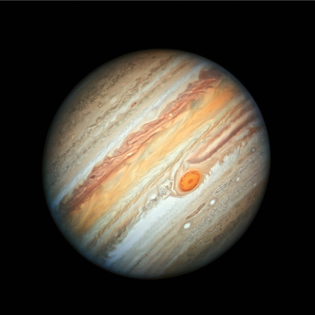
NASA
For at least 150 years, the atmosphere around Jupiter—the largest planet in the solar system—has been filled by a storm covering an area more than 10,000 miles wide, with winds swirling more than 400 mph. But now that area, known as the Great Red Spot because of its size and color, appears to be shrinking. Caleb Keaveney, a PhD student in Yale’s Department of Earth and Planetary Sciences, is focusing on why that’s happening.
Keaveney and his team, including Gary Lackmann of North Carolina State University and Timothy Dowling of the University of Louisville, employed 3D simulation modeling to investigate whether smaller storms influenced the size of the Great Red Spot. They created simulations of interactions between the Great Red Spot and storms of various sizes and frequencies as well as some simulations with no storms at all. The analysis revealed that in simulations including smaller storms, the Great Red Spot grew in size compared to simulations without additional storms. This finding, published in the September 15 edition of Icarus, suggests that changes in smaller storm interactions could contribute to the shrinking of Jupiter’s iconic storm.
As Keaveney prepared to give a talk at the Kennedy Space Center on his work, he emphasized that much remains unknown about the Great Red Spot. “We haven’t found the exact reason the Great Red Spot is shrinking, but we have provided evidence to support one hypothesis,” he notes. He believes solving the full puzzle requires everyone’s participation, including professional scientists, Earth-based meteorologists, and citizen scientists. For now, the Great Red Spot continues to be one of the universe’s enduring mysteries.
 loading
loading